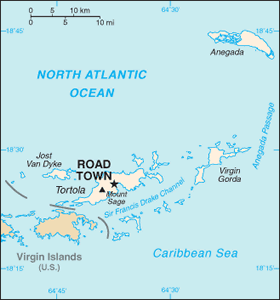The Geography of British Virgin Islands
The Geography of British Virgin Islands
British Virgin Islander Geography
Location: Caribbean, between the Caribbean Sea and the North Atlantic Ocean, east of Puerto Rico
Geographic coordinates: 18 30 N, 64 30 W
Map references: Central America and the Caribbean
Area: total: 153 sq km land: 153 sq km water: 0 sq km note: comprised of 16 inhabited and more than 20 uninhabited islands; includes the islands of Tortola, Anegada, Virgin Gorda, Jost van Dyke
Area - comparative: about 0.9 times the size of Washington, DC
Land boundaries: 0 km
Coastline: 80 km
Maritime claims: territorial sea: 3 nm exclusive fishing zone: 200 nm
Climate: subtropical; humid; temperatures moderated by trade winds
Terrain: coral islands relatively flat; volcanic islands steep, hilly
Elevation extremes: lowest point: Caribbean Sea 0 m highest point: Mount Sage 521 m
Natural resources: NEGL
Land use: arable land: 20% permanent crops: 6.67% other: 73.33% (2005)
Irrigated land: NA
Natural hazards: hurricanes and tropical storms (July to October)
Environment - current issues: limited natural fresh water resources (except for a few seasonal streams and springs on Tortola, most of the islands' water supply comes from wells and rainwater catchments)
Environment - international agreements:
Geography - note: strong ties to nearby US Virgin Islands and Puerto Rico


